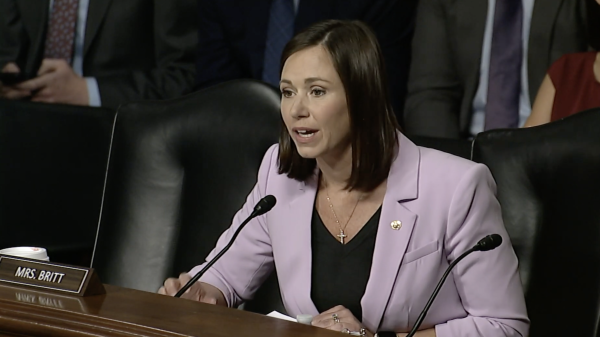Attorney General Steve Marshall last week sent a letter to Mobile Mayor Sandy Stimpson asking for clarification about why the city removed a statue dedicated to Confederate admiral, and a spokesperson said the state is still waiting for a response before moving forward with legal action against the city.
In the letter, Marshall asked Stimpson to clarify whether the 120-year-old monument to Raphael Semmes was removed temporarily or if it has been removed permanently.
“The Attorney General’s Office is awaiting a response from the City of Mobile concerning the purpose of the statue removal,” a spokesperson for the attorney general said. “The Attorney General’s Office has and will enforce the law consistently against all violators.”
The attorney general has received public criticism for moving more quickly to sue Birmingham, which has a black mayor, than Mobile, where the mayor is white.
“In cases where the public entity acknowledges that the law has been broken, enforcement occurs more swiftly than when fact-gathering is required to proceed,” the spokesperson said. “We will evaluate each case as it arises and take action in accordance with the law.”
Birmingham Mayor Randall Woodfin has acknowledged that removing the monument from Linn Park was a violation of the state law, and that the city was willing to pay the one-time $25,000 fine.
“In balancing between the costs of civil unrest versus the costs of a civil fine, I think most would agree with me: the city should pay the cost of that civil fine to make sure that there is not any more unrest in our city,” Woodfin said.
In announcing the removal of the monument last week, the Mobile mayor said he ordered the monument to be “moved from its location” downtown. But he did not specify where the statue was moved to or why.
“It is about removing a potential distraction so we may focus clearly on the future of our city,” Stimpson said. “That conversation, and the mission to create One Mobile, continues today.”
The attorney general, in the letter, said it has been suggested that the city may be relying on a section of the Alabama Memorial Preservation Act, which provides that, in some circumstances, a city may take “appropriate measures” to temporarily remove a monument for protection, preservation, care, repair or restoration.
{{CODE1}}
“This provision must be read in conjunction with the above-quoted provision on repairs, which makes clear that any relocation is temporary and is only permissible for specified reasons,” Marshall wrote to Stimpson. “Moreover, statutes must be read as a whole, and the Legislature’s plain intent was to protect and preserve monuments such as the Semmes memorial. Permanent removal is therefore not an ‘appropriate measure’ that the City may take under the Act, regardless of its reasons for doing so.”
Mobile was the second city to remove a Confederate memorial in recent weeks since protests and unrest began nationwide over systemic racism and police brutality spurred by the killing of George Floyd by a white Minneapolis police officer.
Birmingham was the first, and the attorney general quickly moved to sue the city for removing a 115-year-old Confederate monument from the city’s Linn Park, seeking a $25,000 fine for violating the state’s Memorial Preservation Act, which protects Confederate monuments and other monuments that are at least 40 years old.
The suit is the second in a years-long legal battle between the state and predominately black local officials in Birmingham over the Confederate monument.
On Monday, the University of Alabama System also announced it was removing three plaques honoring Confederates from campus and that it is considering renamining some buildings. The attorney general’s office did not say if Marshall plans to sue the university for violating the Memorial Preservation Act.






















































